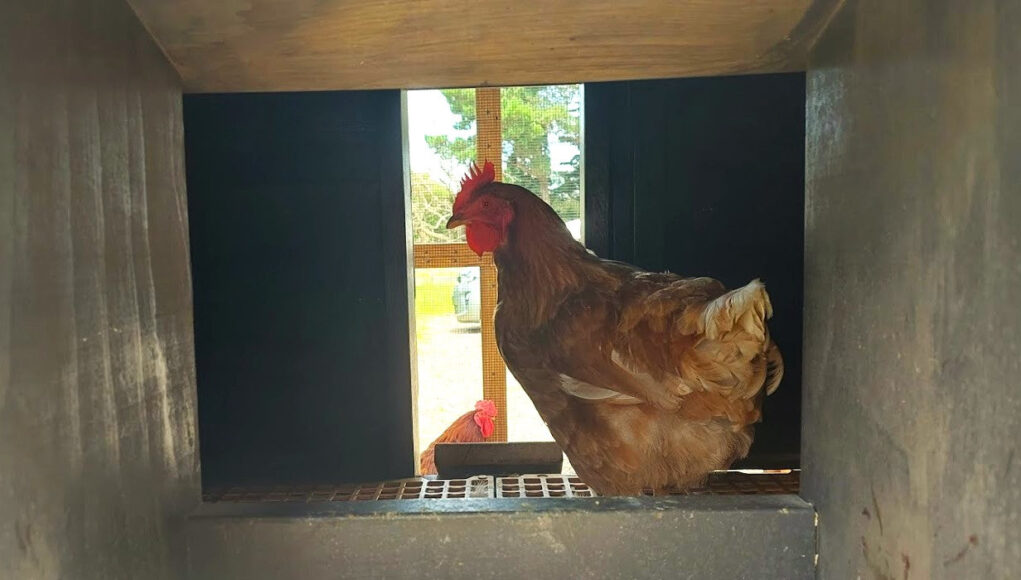Understanding the natural nesting behavior of chickens is essential for anyone interested in raising healthy and content chickens. These behaviors are instinctual and are largely influenced by the environment and conditions in which chickens live. By observing these behaviors, we can provide better care and more comfortable living conditions for our feathered friends.

What is Natural Nesting Behavior?
Chickens, like many birds, have an innate need to create a safe and comfortable space where they can lay their eggs. This behavior is known as nesting. In the wild, chickens would seek out secluded and secure spots to lay their eggs to protect them from predators. In domestic settings, providing the right environment can encourage hens to use designated nesting areas.
Importance of Nesting Boxes
Nesting boxes are crucial components in a chicken coop. They provide hens with a space that mimics the conditions they seek in the wild. For more information on setting up nesting boxes, ensure they are placed in a quiet, dark, and elevated area of the coop.
Design and Placement
The design and placement of nesting boxes can significantly impact how often they are used by the hens. Hens prefer calm and dark areas, so placing the boxes away from the hustle and bustle of the coop is ideal. For additional guidance on box placement, see tips on nesting box location.
Materials and Comfort
Using the right materials inside the nesting boxes is also important. Straw, hay, or soft wood shavings can make the boxes more inviting. A comfortable nesting area encourages hens to lay eggs there rather than in undesirable locations. For creative ideas, check out some nesting box ideas.
Behavioral Patterns in Nesting
Chickens display specific behavioral patterns when it comes to nesting. They often prefer to lay eggs at certain times of the day and may exhibit behaviors such as clucking or turning in circles before settling down to lay an egg.
The Role of Environmental Factors
Environmental factors play a significant role in nesting behavior. Temperature, light, and even the presence of other hens can influence where and when a hen decides to lay her eggs. For more on managing environmental factors, read about flock brooder care.
Encouraging Proper Nesting Behavior
To encourage proper nesting behavior, ensure that your chickens have access to clean, comfortable, and secure nesting boxes. Regular cleaning and maintenance of these boxes are necessary to keep them inviting for the hens.
Common Challenges and Solutions
Despite best efforts, there may be instances where hens refuse to use the provided nesting boxes. Understanding the reasons why hens avoid nesting boxes can help address any issues effectively.
Misplaced Egg Laying
Some hens may choose to lay eggs in the coop’s corners or other unsuitable areas. This can be frustrating for chicken owners, but often, simple changes can rectify the issue.
Adapting to Changes
Chickens can be sensitive to changes in their routine or environment. If you notice a sudden change in their nesting behavior, consider any recent changes in their environment and try to restore their routine.

FAQs
How many nesting boxes do I need for my chickens?
It is generally recommended to provide one nesting box for every four to five hens. This ensures that hens do not have to compete for space, which can reduce stress and encourage regular egg laying.
Why are my hens not laying eggs in the nesting boxes?
If hens are not using the nesting boxes, consider factors such as the cleanliness of the boxes, their location, or competition among hens. Ensuring the boxes are inviting and properly maintained can help resolve this issue.
What materials should I use in a nesting box?
Common materials include straw, hay, and wood shavings. These materials provide comfort and cushioning for the eggs and are easy to clean and replace.
By understanding and supporting the natural nesting behavior of chickens, we can ensure that our feathered companions are comfortable and productive. For those interested in further reading, explore more on chick brooder care.
This article contains affiliate links. We may earn a commission at no extra cost to you.











